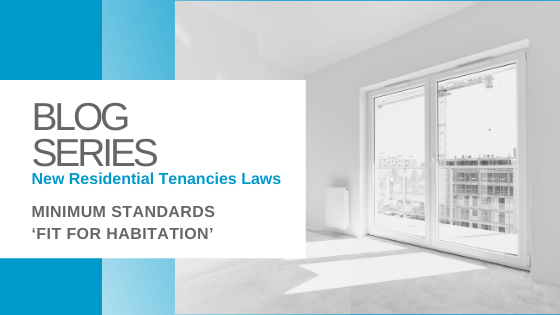From 23 March 2020, NSW landlords are required to provide the rented property in a reasonable state of cleanliness and ‘fit for habitation’.
To clarify the meaning of ‘fit for habitation’ and set clearer expectations for tenants, landlords and property managers, seven minimum standards have been introduced.
The standards, that will be set out in the new section 52(1A) of the Residential Tenancies Act, require that all rental premises must:
- Be structurally sound
- Have adequate lighting, either natural or artificial (except in storage rooms or garages)
- Have adequate ventilation
- Be supplied with electricity or gas with an adequate number of outlets for lighting and heating
- Have adequate plumbing and drainage
- Be connected to a water supply service or have infrastructure that’s able to supply hot and cold water for drinking, washing and cleaning
- Contain bathroom facilities that allow for privacy, including toilet and washing facilities.
To clarify the requirement of being “structurally sound”, the new section 52(1B) of the Residential Tenancies Act, sets out that floors, ceilings, walls, supporting structures, doors, windows, roof, stairs, balconies, balustrades and railings must:
- Be in a reasonable state of repair
- Not be subject to significant dampness
- Not allow water penetration into the premises
- Not be liable to collapse because they are rotten or otherwise defective.
Prior to March 23, 2020:
In instances prior to the introduction of the minimum standards, a landlord needed to ensure that the premises were in a reasonable state of cleanliness and fit for habitation by the tenant. However, the phrase ‘fit for habitation’ had not been defined, leaving it open to interpretation.
For example, the landlord may think it’s quite alright that there’s only a single power point in the lounge room, but the tenant complains that it’s simply not adequate to run the TV, stereo, modem, lamp and various other appliances and devices.
Property managers have been left in the unenviable position of having to negotiate what the appropriate standard is in circumstances like these and broker a resolution.
Moving Forward:
Landlords need to ensure their rented properties meet the minimum standards to be fit for habitation. Rented properties are already required to be fit for habitation and should already meet these basic standards.
The property could have other issues that may make it unfit for a tenant to live in, even if it meets the above seven minimum standards. Before the property is rented out, the landlord or agent should take steps (such as make repairs) to make sure the property is fit to live in.
These standards must be maintained throughout the tenancy (by making repairs).
Our next topic will cover changes to the information disclosed to prospective strata tenants.
Stay tuned.
SCA (NSW), are here to help our members transition to the new laws.
If you would like to read about all the changes for tenants and landlords alike, please visit the Department of Fair Trading’s website here.



